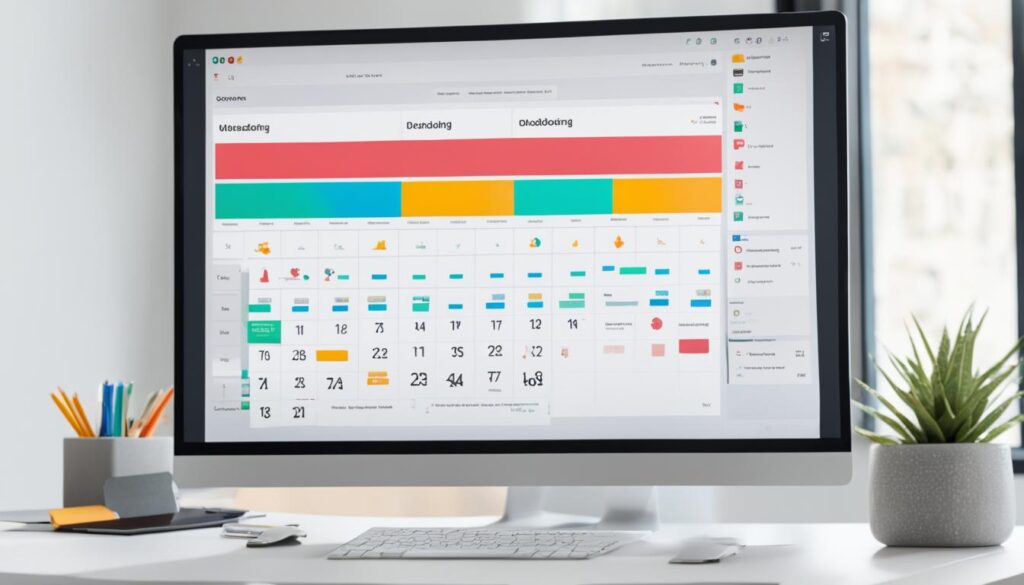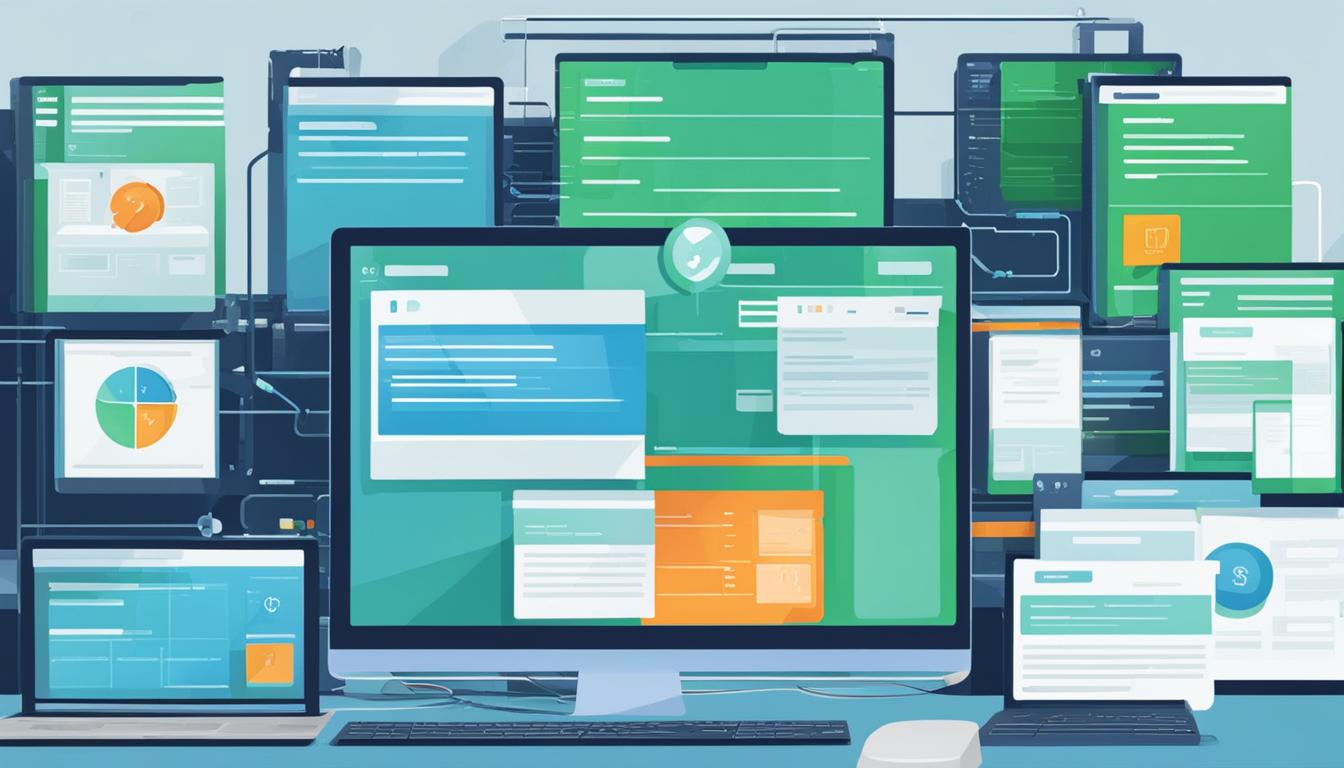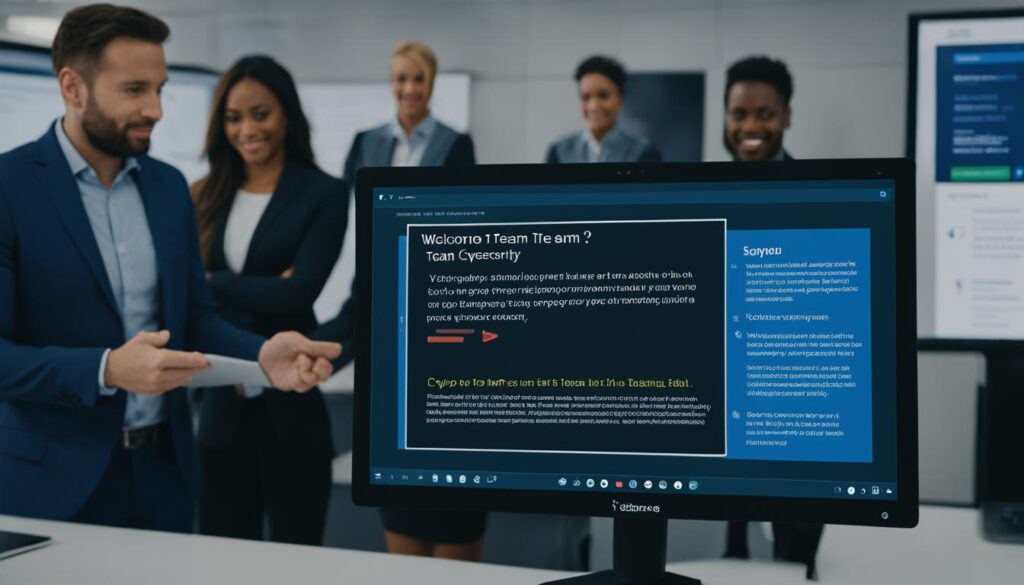Welcome to the era of employee onboarding automation, where the days of manual paperwork and time-consuming administrative tasks are a thing of the past. In today’s fast-paced business environment, companies are recognizing the importance of streamlining their onboarding processes to provide a seamless experience for new hires.
According to Gallup, only 12% of employees believe their organization does a great job of onboarding new hires. Poor onboarding experiences can have a significant impact on employee retention, productivity, and even the employer’s reputation. That’s where employee onboarding automation comes in.
With the advent of advanced software and technology, automating the employee onboarding process has become not just a possibility, but a necessity. By leveraging employee onboarding software, organizations can efficiently manage tasks such as introducing new hires to colleagues, scheduling orientation meetings, and organizing onboarding documents.
Key Takeaways:
- Employee onboarding automation streamlines the onboarding process by automating tasks and reducing manual paperwork.
- Automated onboarding improves the new hire experience, leading to increased employee retention.
- Top employee onboarding software, like Workato, provides end-to-end automation for a seamless onboarding journey.
- Automation saves time, improves efficiency, and allows HR teams to focus on strategic activities.
- Implementing employee onboarding automation requires specific tools and systems, such as HRIS, LMS, and virtual onboarding platforms.
The Benefits of Employee Onboarding Automation
Employee onboarding automation offers several benefits for both new hires and organizations. By utilizing onboarding automation tools and implementing an automated onboarding system, companies can streamline and enhance the onboarding process.
One of the key advantages of employee onboarding automation is its ability to ensure accuracy and consistency throughout the onboarding processes. By automating tasks such as introducing new hires to colleagues, scheduling orientation meetings, and organizing onboarding documents, organizations can reduce the risk of errors and create a seamless onboarding experience.
Furthermore, automated onboarding systems enable HR teams to save time and focus on more strategic activities. By automating administrative tasks, such as creating employee profiles in the HRIS or setting up user accounts, HR professionals can dedicate their valuable time to other essential aspects of the onboarding process.
Automated onboarding also empowers new hires to be productive from day one. By providing them with the necessary applications and equipment right away, organizations can expedite the onboarding process and ensure that new employees have everything they need to hit the ground running.
Additionally, employee onboarding automation significantly improves employee retention. A positive onboarding experience increases the likelihood of employees staying with the organization for at least three years, resulting in higher employee satisfaction and reduced turnover rates.
By utilizing onboarding process automation tools, organizations can create a more efficient and personalized onboarding process. This, in turn, helps companies stand out from their competitors and portrays a positive brand image to new hires.
Automated onboarding also promotes socialization among employees. By automating tasks that encourage interaction and collaboration, such as introducing new hires to their teams and assigning mentors, organizations foster a sense of community and camaraderie from the very beginning.
Finally, automating the onboarding process reduces stress and allows new hires to gain a better understanding of the company’s culture. From streamlined paperwork to interactive onboarding experiences, automation creates a smoother and more engaging process, creating a positive first impression for new employees.
Employee onboarding automation offers numerous benefits, including enhanced accuracy, increased efficiency, improved retention rates, and a more positive onboarding experience. By leveraging onboarding automation tools and implementing automated systems, organizations can optimize their onboarding processes and set new employees up for long-term success.
How to Implement Employee Onboarding Automation
Implementing employee onboarding automation requires the use of specific tools and systems. To streamline and optimize the onboarding process, consider utilizing the following:
1. HR Information System (HRIS)
An HRIS automates administrative tasks, such as employee data management and scheduling meetings. By leveraging an HRIS, you can centralize employee information, automate data entry, and ensure accurate record-keeping throughout the onboarding journey.
2. Learning Management System (LMS)
A Learning Management System (LMS) can automate training and development activities during the onboarding process. With an LMS, you can create and deliver interactive onboarding modules, track employee progress, and assess their learning outcomes.
3. Virtual Onboarding Platforms
Virtual onboarding platforms offer pre-onboarding activities and virtual buddy assignments to new hires. These platforms facilitate remote interactions, help new employees become familiar with company culture, and establish connections with colleagues before their formal start date.
4. Paperwork Processing Software and Digital Forms
Streamline the collection and storage of employee data and document signing using paperwork processing software and digital forms. By digitizing these processes, you can eliminate manual paperwork, reduce errors, and ensure compliance with legal and regulatory requirements.

5. Automated Workflows
Automated workflows play a crucial role in guiding HR staff through each step of the onboarding process. By creating predefined workflows, you can ensure consistency, reduce manual intervention, and eliminate the risk of missing any essential tasks.
6. Integrations with Other Systems
Integrating your onboarding automation platform with applicant tracking systems, IT service management systems, and business communications platforms can further enhance automation capabilities. These integrations enable seamless data transfers and streamline the overall onboarding experience.
By adopting these tools and systems, you can implement employee onboarding automation effectively. The combination of onboarding automation software, onboarding automation platform, and an automated employee onboarding solution helps save time, improves accuracy, and provides a more engaging and efficient onboarding experience for new hires.
Best Practices for Successful Onboarding Automation
Successful onboarding automation requires careful planning and implementation. To ensure a smooth and effective onboarding process, follow these best practices:
- Identify your goals and objectives: Before implementing automated employee onboarding, clearly define what you want to achieve. Align the onboarding program with your company’s needs and culture to maximize its impact.
- Create a clear plan: Develop a comprehensive plan that outlines all the necessary steps involved in welcoming new employees. Include timelines and communication strategies to ensure a consistent and structured onboarding experience.
- Make the onboarding process engaging: Incorporate multimedia elements and interactive content to keep new hires actively involved. This can include videos, quizzes, or virtual tours to help them better understand the company culture and values.
- Assign mentors: Provide new hires with a mentor who can offer support and guidance throughout the onboarding journey. Mentors can help them navigate the organization, answer questions, and build connections.
- Leverage technology: Take advantage of tools like chatbots or virtual reality to enhance automation and provide additional resources. These technologies can streamline the onboarding process and make it more interactive and engaging for new hires.
- Ensure consistency: Develop standard operating procedures and clearly define responsibilities for each task. This helps maintain consistency across the onboarding process, ensuring that each new hire receives a consistent and high-quality experience.
- Collect feedback: Use automated surveys to gather feedback from new hires. This feedback is valuable for identifying areas for improvement and making continuous enhancements to the onboarding process.
- Follow the four Cs of onboarding automation:
- Compliance: Ensure that all necessary legal and regulatory requirements are met during the onboarding process.
- Clarification: Provide clear and concise information to new hires, ensuring they have a thorough understanding of their roles, responsibilities, and expectations.
- Culture: Introduce new hires to the company’s culture, values, and mission. Help them feel a sense of belonging and alignment with the organization.
- Connection: Foster connections and relationships among new hires, existing employees, and the broader organization. Encourage collaboration and a sense of community.
By following these best practices, you can optimize your automated onboarding process and provide new hires with a seamless and engaging experience.

Conclusion
Automated employee onboarding solutions offer significant advantages for organizations, providing increased efficiency, improved employee retention, and a more positive new hire experience. By automating tasks such as paperwork, training, and orientation, HR teams can save valuable time and redirect their focus towards strategic activities.
Implementing employee onboarding automation requires the use of specific tools and platforms, including HRIS, LMS, virtual onboarding systems, and workflow automation software. These solutions work together to streamline the onboarding process and ensure a seamless experience for new hires.
Following best practices such as setting clear goals, creating engaging content, and leveraging technology can enhance the success of onboarding automation. A well-planned and executed onboarding automation strategy benefits both the organization and the new employees by providing accuracy, consistency, engagement, and significant cost savings.
Investing in employee onboarding automation is a smart choice for organizations looking to enhance their onboarding process. The benefits of this automated solution, including increased efficiency, improved employee retention, and a more positive new hire experience, make it an invaluable tool for streamlining operations and fostering a strong, productive workforce.
FAQ
What is employee onboarding automation?
Employee onboarding automation refers to the use of software and technology to streamline and automate the process of welcoming new hires into an organization. It involves automating tasks such as introducing new hires to colleagues, scheduling orientation meetings, and organizing onboarding documents.
What are the benefits of employee onboarding automation?
Employee onboarding automation offers several benefits for both new hires and organizations. It ensures accuracy and consistency in onboarding processes, reduces the risk of errors, and enhances the new hire experience. It also saves time for HR teams, allows new hires to be productive from day one, improves employee retention, and helps organizations stand out by creating a more efficient and personalized onboarding process.
How can employee onboarding automation be implemented?
Employee onboarding automation can be implemented through the use of specific tools and platforms, such as HR information systems (HRIS), learning management systems (LMS), virtual onboarding systems, and workflow automation software. These systems automate administrative tasks, training and development activities, pre-onboarding activities, paperwork processing, and more.
What are the best practices for successful onboarding automation?
To ensure successful onboarding automation, it is important to set clear goals and objectives for the onboarding program, create engaging content, leverage technology, assign mentors to provide support, develop standard operating procedures, and collect feedback from new hires through automated surveys. Following these best practices can enhance the onboarding experience and maximize the benefits of automation.
What are the key takeaways of employee onboarding automation?
Employee onboarding automation offers significant advantages for organizations, including increased efficiency, improved employee retention, and a more positive new hire experience. By automating tasks such as paperwork, training, and orientation, HR teams can save time and focus on strategic activities. Implementing onboarding automation requires the use of specific tools and platforms, and following best practices can ensure successful implementation.




